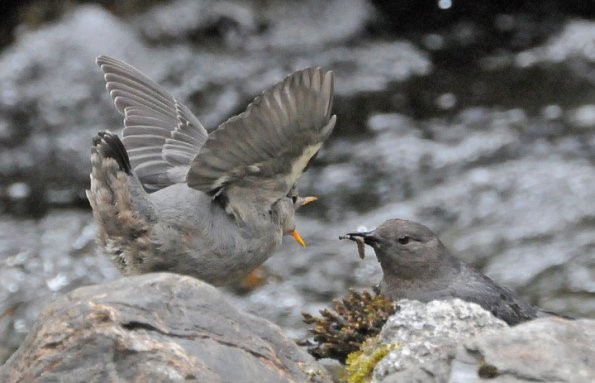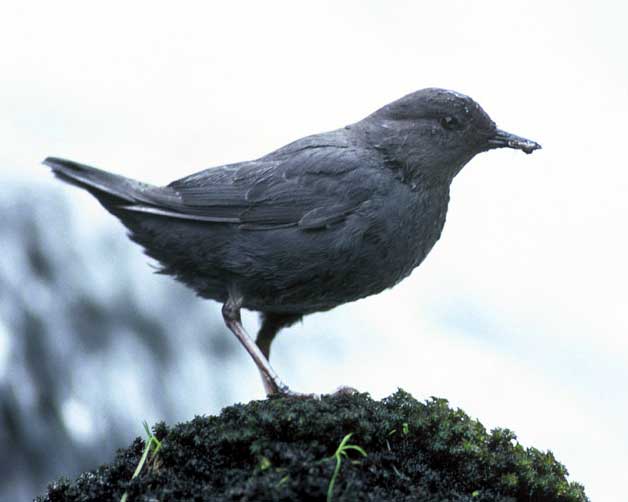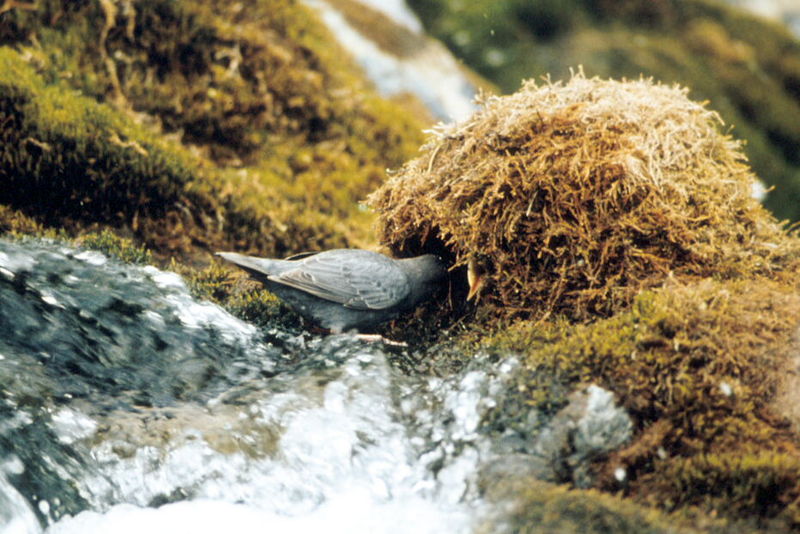
Form and Function
American Dipper's (Cinclus mexicanus) are about 7 to 8.5 inches in length and are quite stocky. They have sharp claws on their feet so that they can grasp prey when capturing or consuming. The Dipper has short yellow legs with unwebbed feet, because although it does spend a lot of time in the water it does not typically use its feet to swim. Instead it uses its wings as flippers, which are short, pointed and very strong. While under-water they swim with ease by flapping their wings extremely fast, propelling them through the water (Gilliard 1958). The American dipper is unique in the way that it stays mobile by flying, walking, swimming, and diving.
These magnificent passerine birds have the ability to stay underwater for as long as thirty seconds, although on average they are typically only underwater for ten seconds at a time. They use their straight, long, slender, and slightly hooked beak to their advantage while hunting for their prey (Reilly 1968). The shape of their beak has evolved from their diet which includes some soft and easy to chew organisms like insects, and some harder to eat things like snails and mollusks. Their diet is similar to that of the Wood Duck.They don’t eat anything too big, so a large beak would be unnecessary. The structures the American dipper has are a reflection of its environment and lifestyle.
As for nesting the American dipper builds them quite large and
spherical (Milne 1969). They always include an entrance somewhere
on the side of the nest. The nests are made up of mosses and they
tend to make them on ledges of rocks during the sum mer
so that they are protected from flooding and other predators.
Sometimes they purposely form their nests in places that are right
by the water so that they are constantly misted with water from the
falls, (Reilly 1968). The way the American dipper forms its nests
are unique to the aquatic environment in which they live.
mer
so that they are protected from flooding and other predators.
Sometimes they purposely form their nests in places that are right
by the water so that they are constantly misted with water from the
falls, (Reilly 1968). The way the American dipper forms its nests
are unique to the aquatic environment in which they live.
Some American Dipper's react to the environmental stimuli of winter by
takin part in altitudinal migration where they relocate to the
mountains. They migrate up for better breeding areas and a wider
variety of food. There tends to be less
predation up there so they also feel safer. The extremely cold
temperatures can definitely have an effect on the birds
physiological functions. Therefore moving where it is a little
warmer can prevent this from happening (Mackas 2010). Overall the
American Dipper does well in its environment and lives a very
successful life.